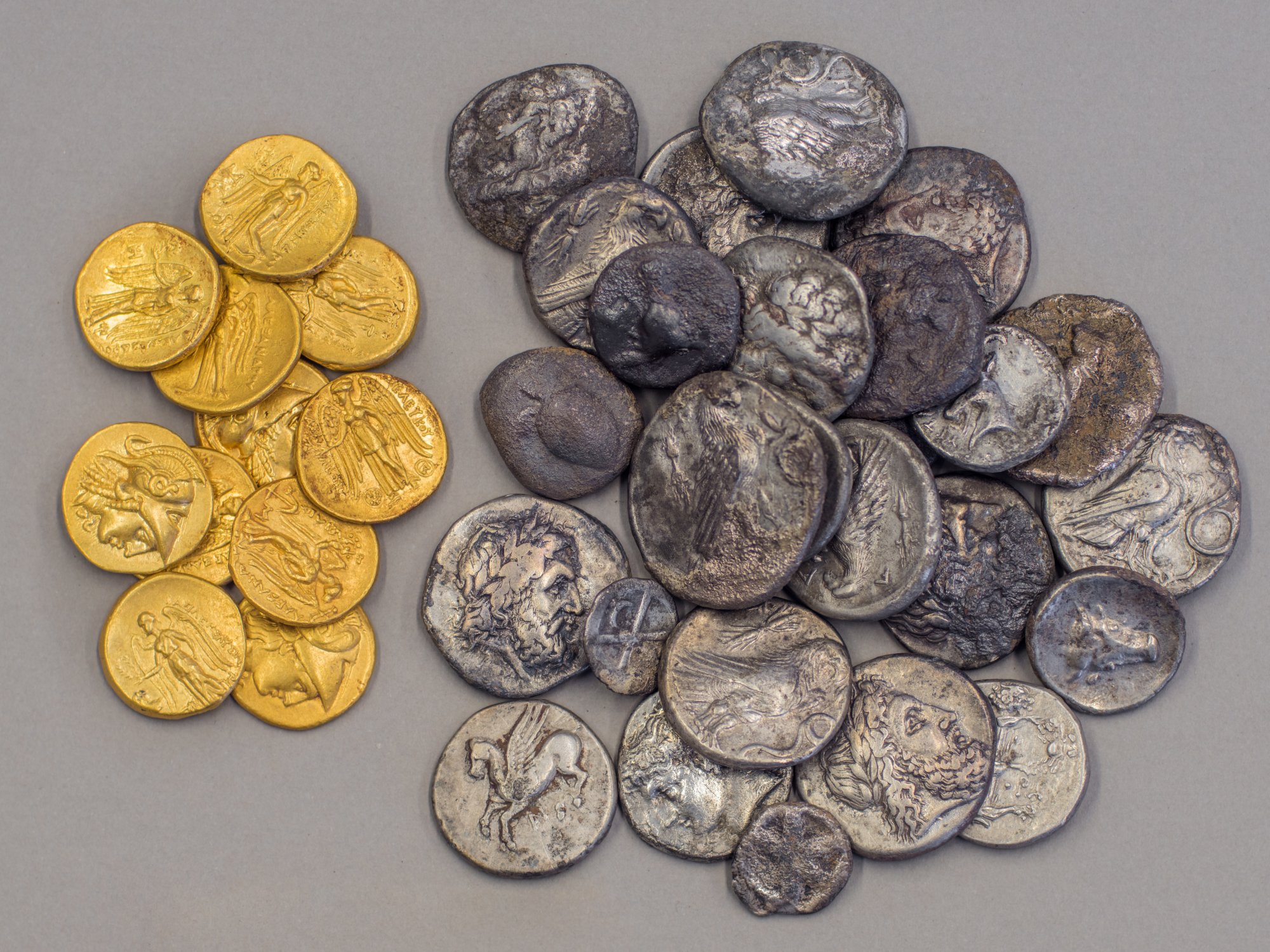
Recent archaeological discoveries on Kastelli Hill in the Old Town of the city of Chania, Crete, have brought to light a unique monetary collection of 37 rare coins, including 11 gold staters with different versions of Alexander the Great depicted on them.
During an ongoing excavation in Chania, Crete, archaeologists uncovered high-value coins, depicting Alexander the Great at different stages of his life, and mainly posthumous mints either in the name of Philip III Arridaeus, Seleucus I Nicator or Lysimachus of Thrace, the mints of Macedonia (Amphipolis), Asia (Abydos, Lampsakou, Sardeon, Arado).
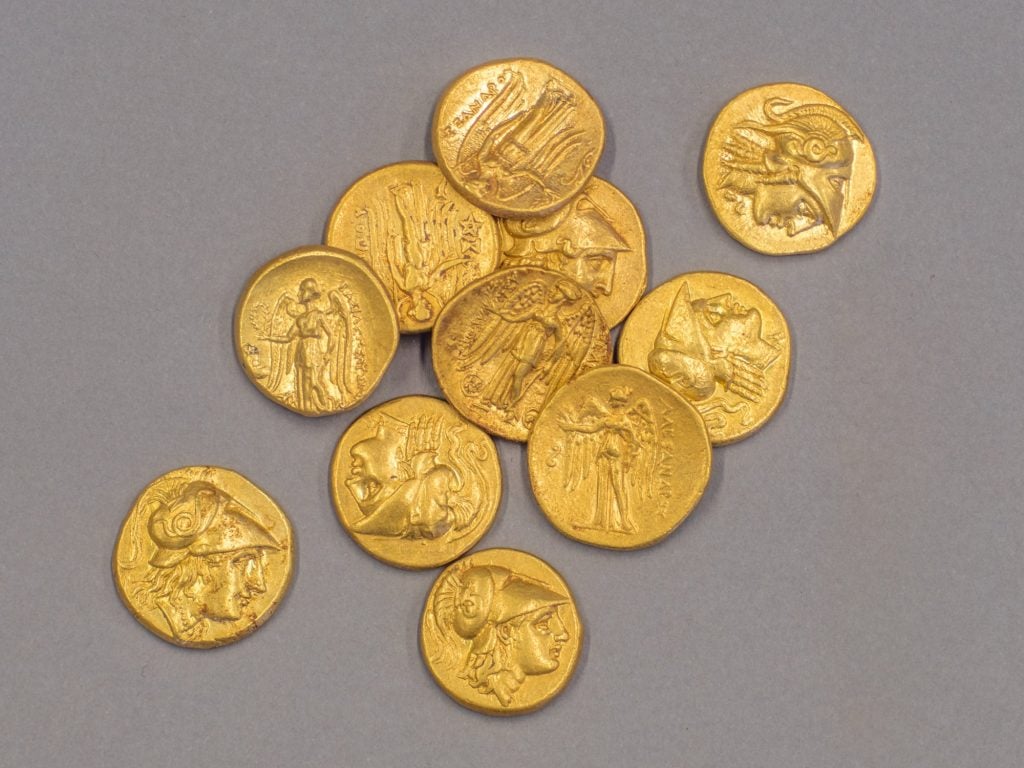
Gold stater and silver coins depicting Alexander the Great
It is claimed that one gold stater corresponded to the monthly pay of a mercenary.
The silver coins are 15 Elidos staters, which were minted in Olympia during the Olympic Games of the 4th century BC, two drachms of Cyrene, one Corinthian stater of the Palace of Acarnania, as well as domestic Cretan coins.
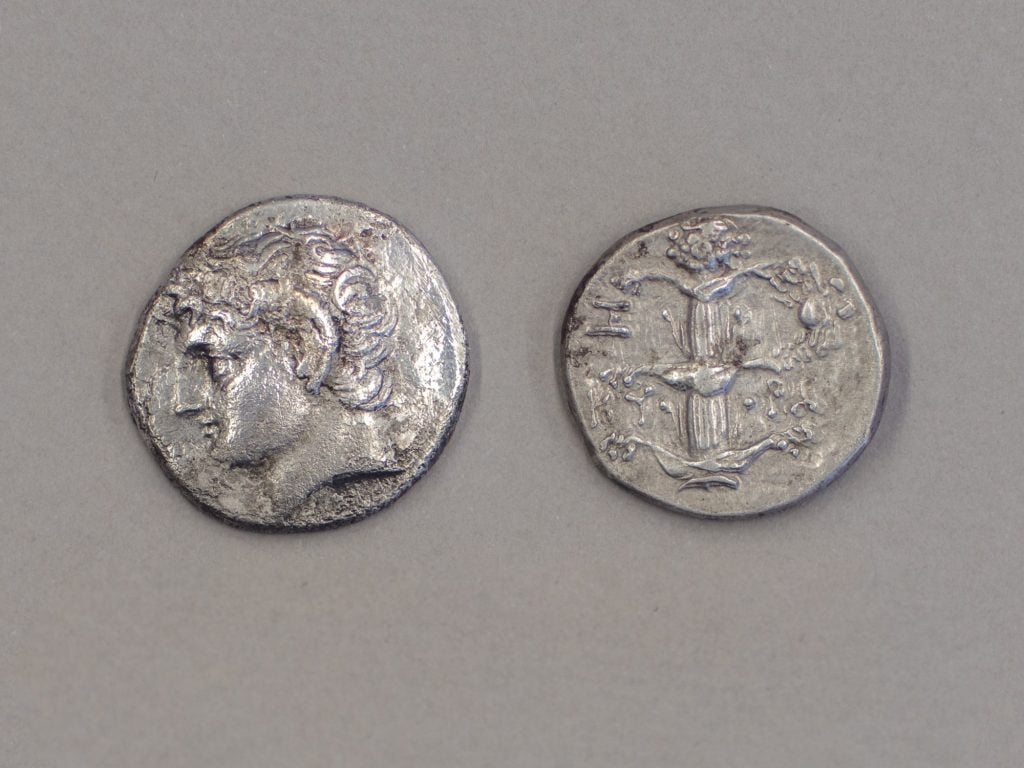
There was also one stater of Praisos, two drachms of Phaistos, one drachm of Hyrtakina, two pseudo-Aeginite hemidrachms of Kydonia and two early versions of Aegina with an embossment of the sea and land turtle.
The date of concealment is thought to be around 300 to 280 BC, with the two coins of Kydonia suggesting the tucking away of significant sums, likely by mercenaries, in the space behind the wall of the acropolis of Kydonia.

Excavations at Kastelli Hill in Chania have been under the direction of Dr Maria Andreadaki-Vlazakis, and with support from the Ephorate of Antiquities of Chania.
The excavation work that has been taking place in Katre Street, Chania, uncovered a few years ago the large – mostly damaged apart from intact column bases – hypostyle room-hall of the 14th century BC is in progress. The area forms part of the palace complex of Kydonia, from the Creto-Minoan period, which was destroyed by an earthquake midway through the 13th century BC.

Minoan human sacrifice of a girl after big earthquake
The earthquake was followed by the sacrifice of a girl along with 43 goats, a number of sheep, four pigs and two oxen, which is believed to be a unique find of great importance for archaeology, because it presents the first undisputed evidence of human sacrifice in the Minoan period.
It is understood that in the years following the destruction of the hypostyle hall, the area was converted to an outdoor space, where in the Geometric period (8th century BC) large accumulations of broken pithos and sizeable vessels accrued – part of which was discovered in this latest excavation.
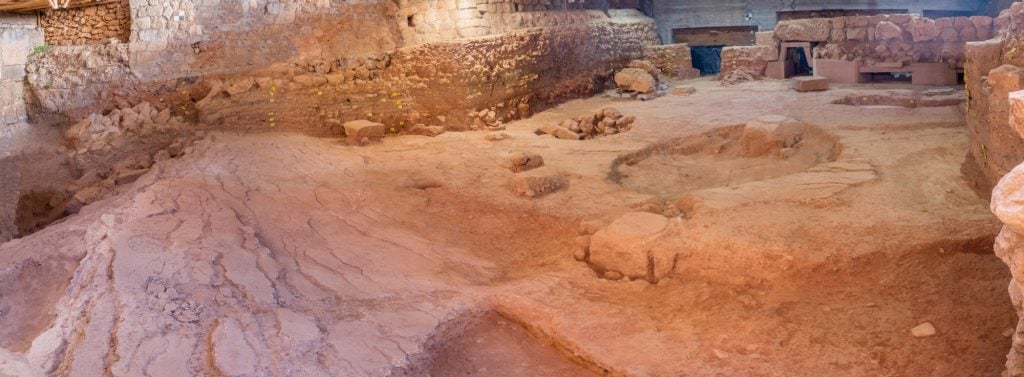
The successive layers of earthen floors from the 8th century BC to the beginning of the 6th century have brought forth a lot of ceramic discoveries, which have been useful for the study of the evolution of pottery in the aforementioned time periods in the city of Kydonia. An opportunity that had not presented itself amid previous excavations in Chania.
A wall – built in the early Archaic years, in the second half of the 7th century – marks the eastern boundary of the extensive outdoor area, and is believed to have been destroyed by another earthquake at the beginning of the 6th century.
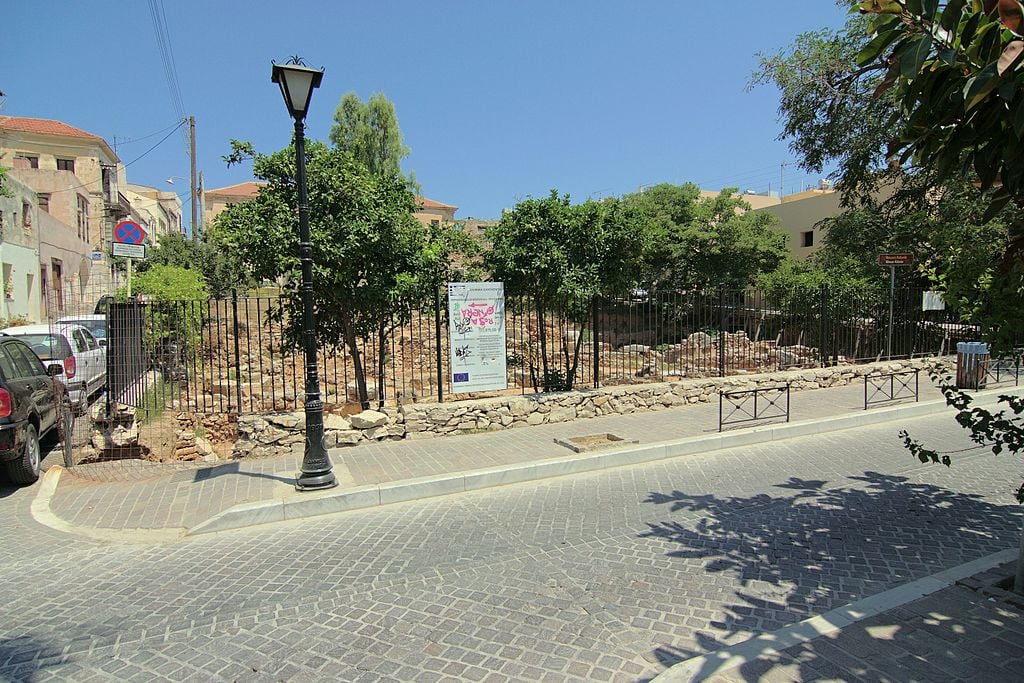
Deposits found in the recent excavation include black bowls, animal bones and many anklets, clay potsherds, pessaries, slings, sparks and a number of other objects. An osteological study showed that the animals carcasses were cut into small pieces for the preparation and cooking of a large feast.
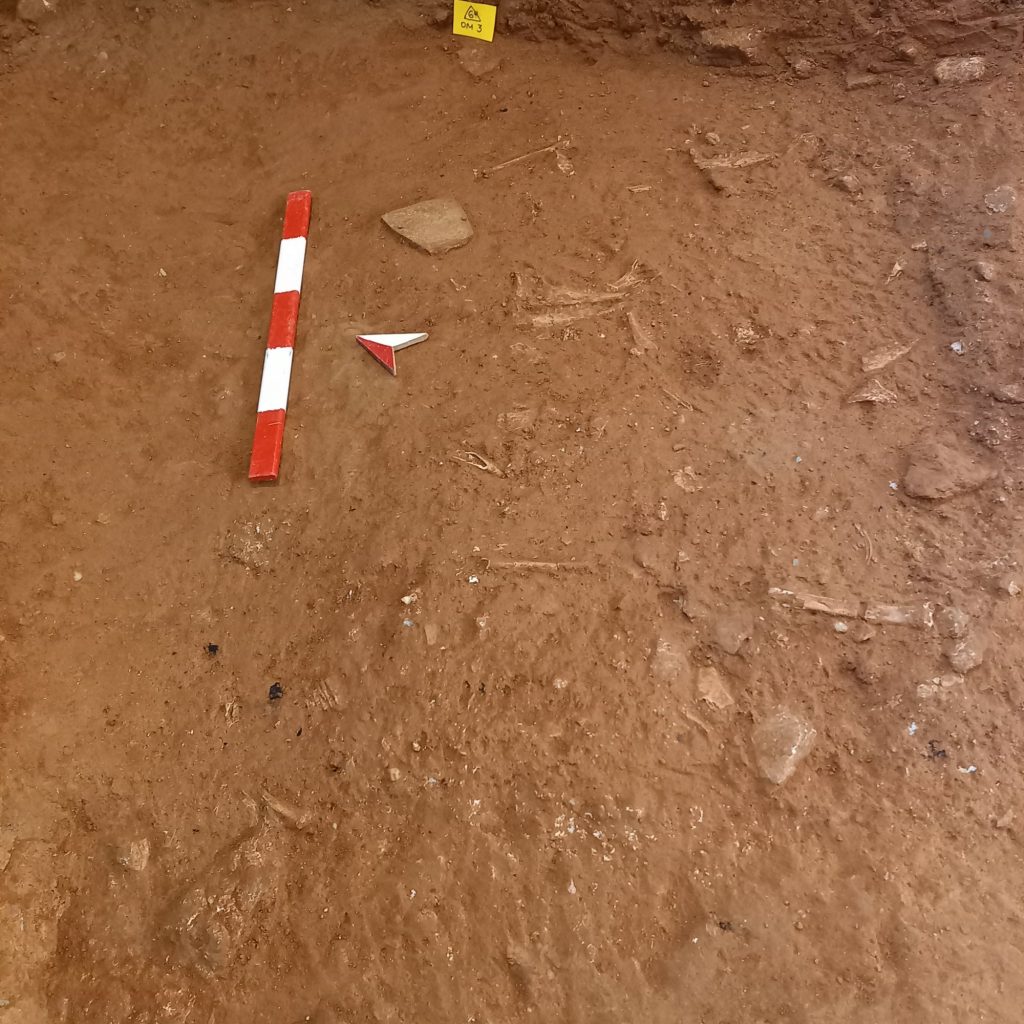
Archaeologists and researchers working on the site over the years believe that all the findings, along with the location on the hill, point to the conclusion that a public building, likely a manor or a sanctuary, was constructed in the outdoor area in the early Archaic years.
Previous Discoveries at Kastelli Hill in Chania, Crete
There have been previous monetary discoveries in Chania’s Kastelli Hill, where in 2022 a hoard of 33 silver coins, and coins from 13 Cretan cities and Larissa, were discovered.
In March last year, Greek authorities were finalizing the candidacy file for the inclusion of Crete’s Minoan-era palaces in the UNESCO World Heritage List. The file was submitted by the Ministry of Culture in September and included the palaces of Zakros, Knossos, Phaistos, Malia, Zominthos and Kydonia.
The palaces currently sit on the ‘tentative list’ of the UNESCO World Heritage Convention, with a decision expected imminently.
See all the latest news from Greece and the world at Greekreporter.com. Contact our newsroom to report an update or send your story, photos and videos. Follow GR on Google News and subscribe here to our daily email!



